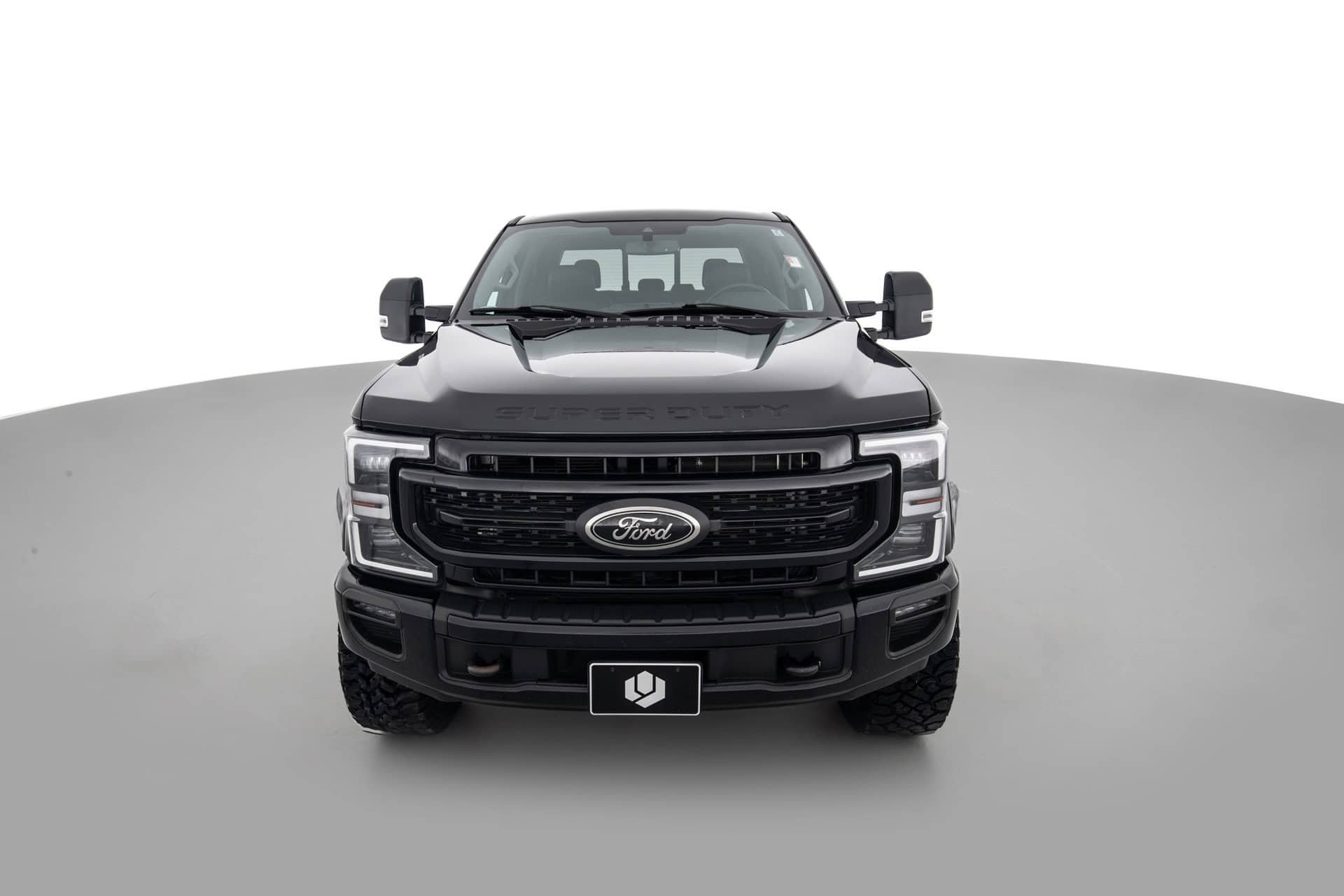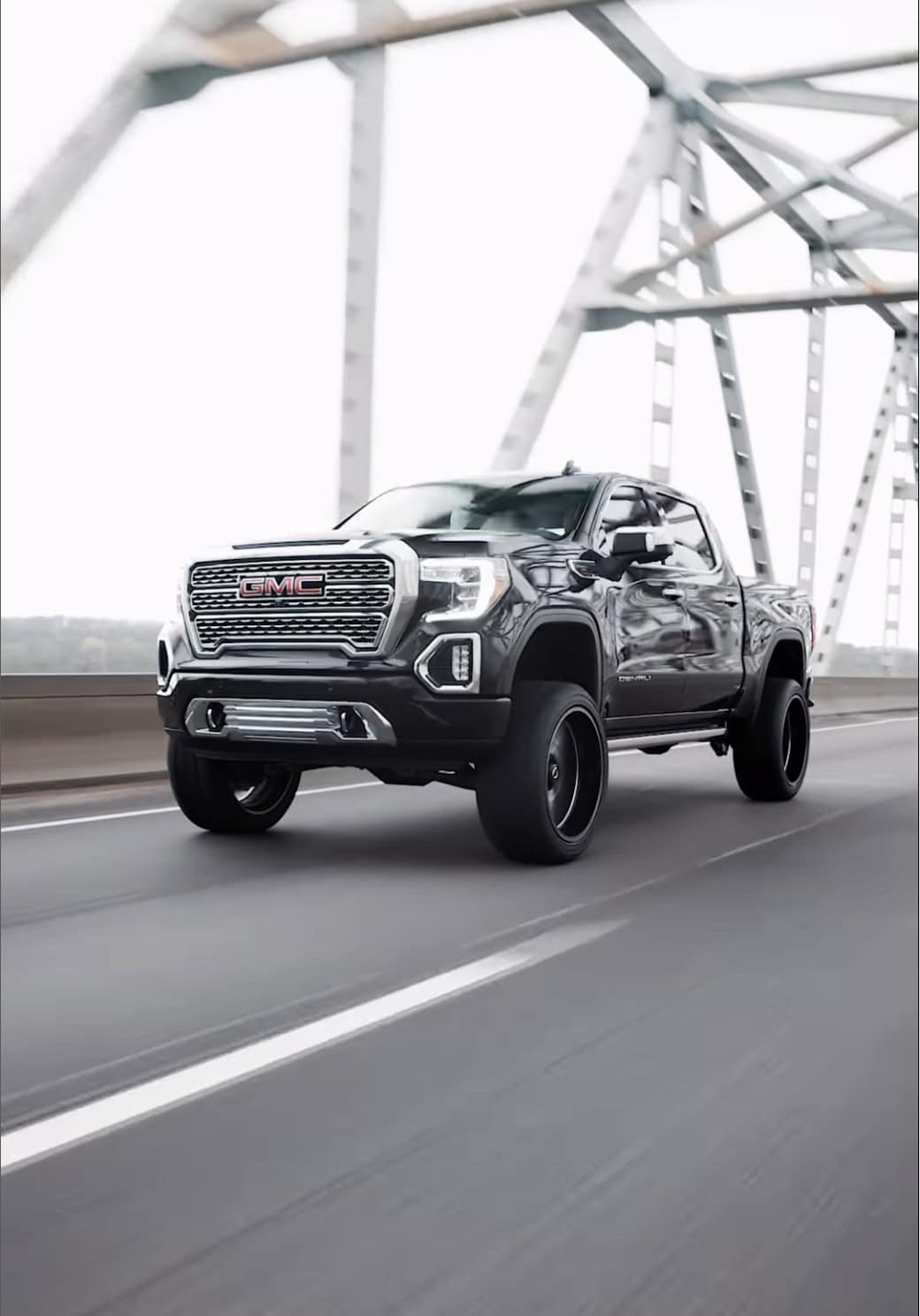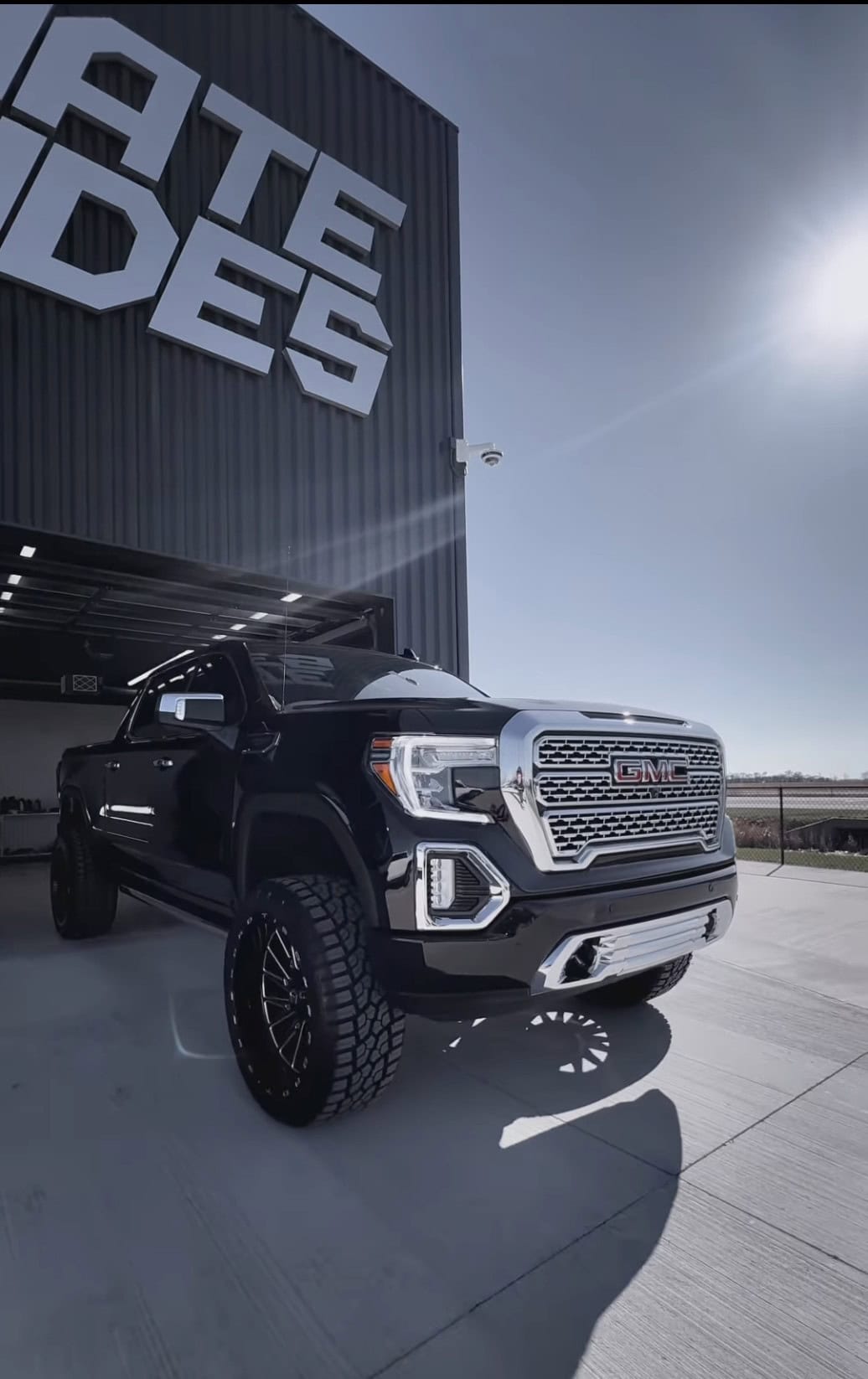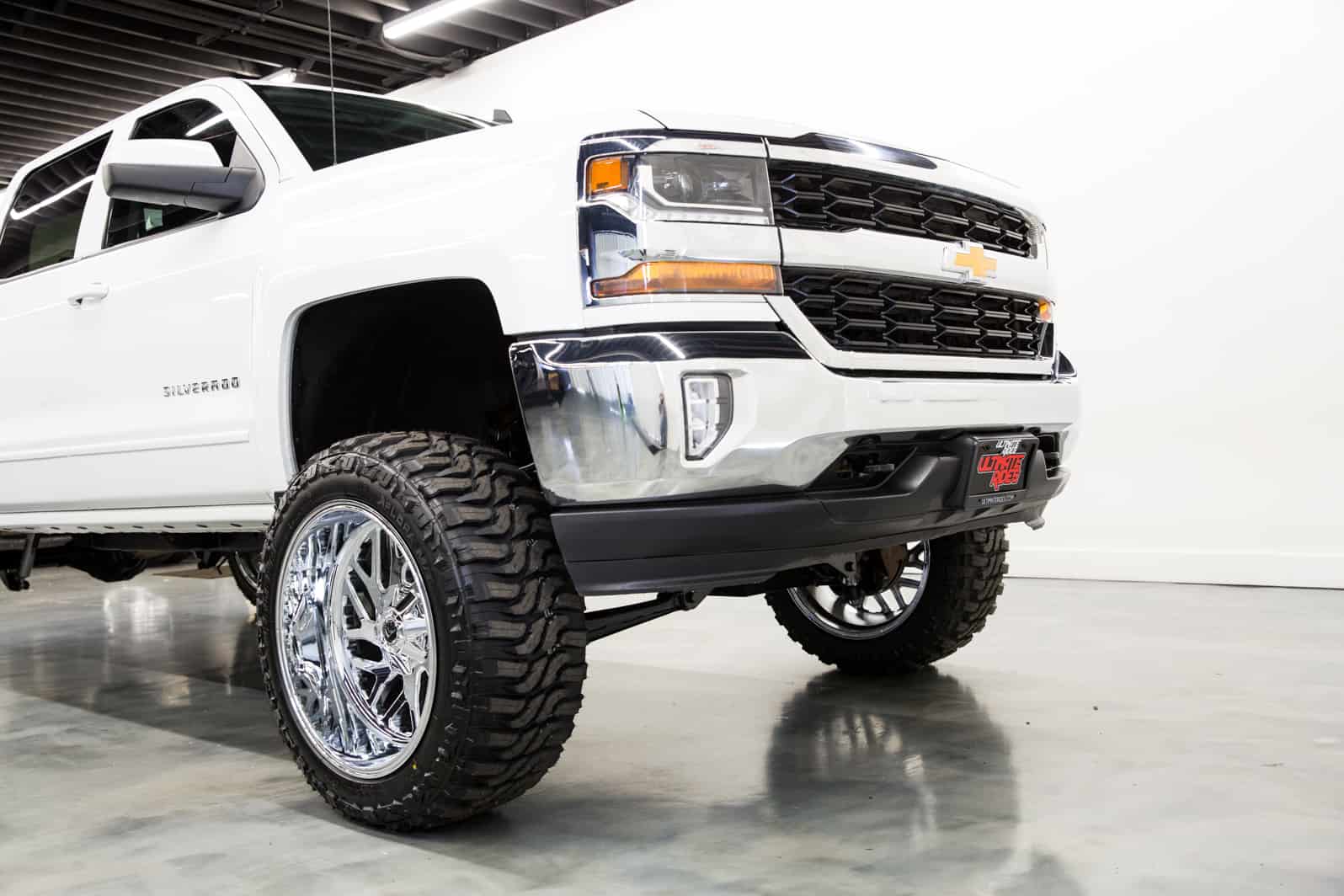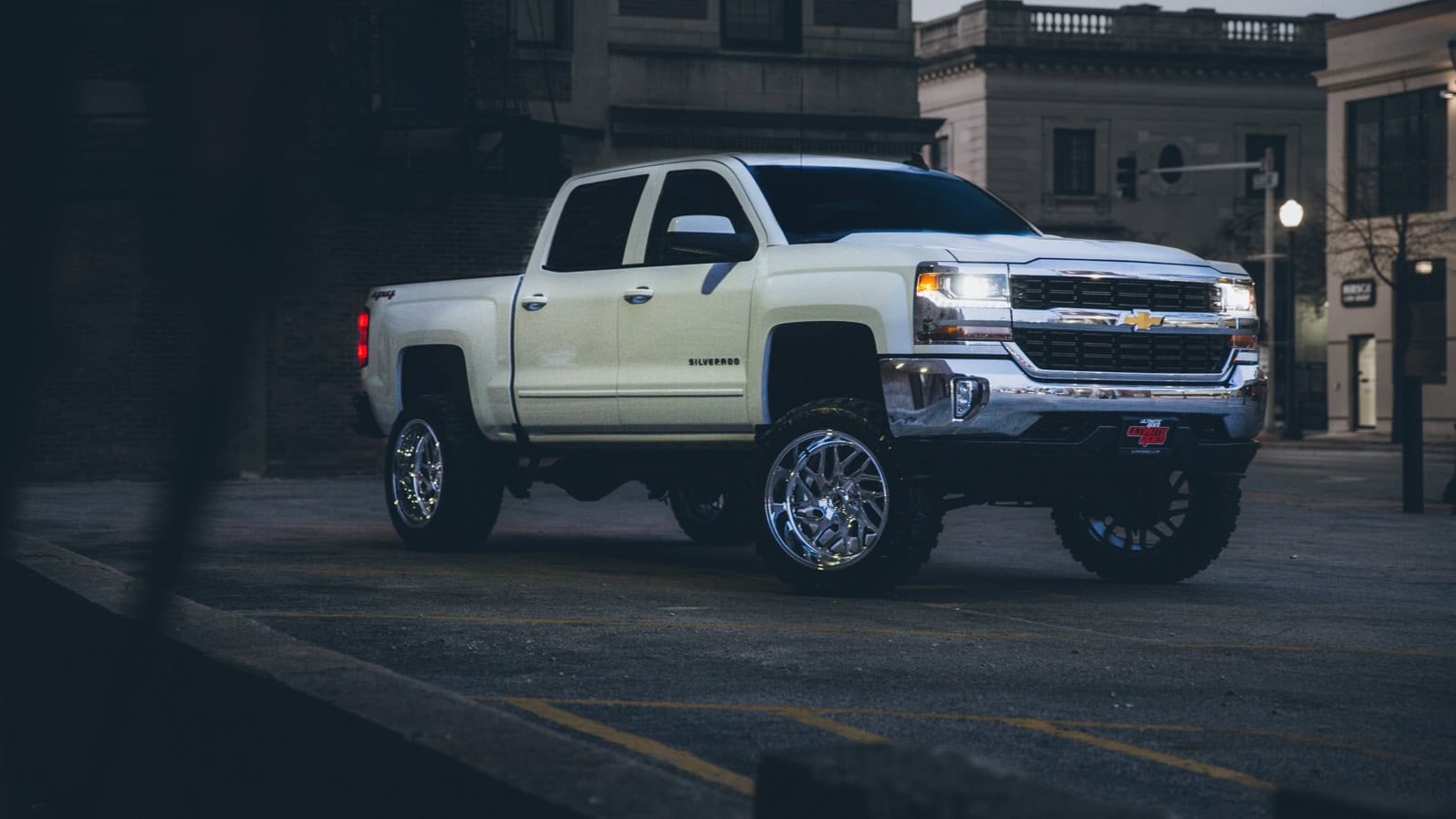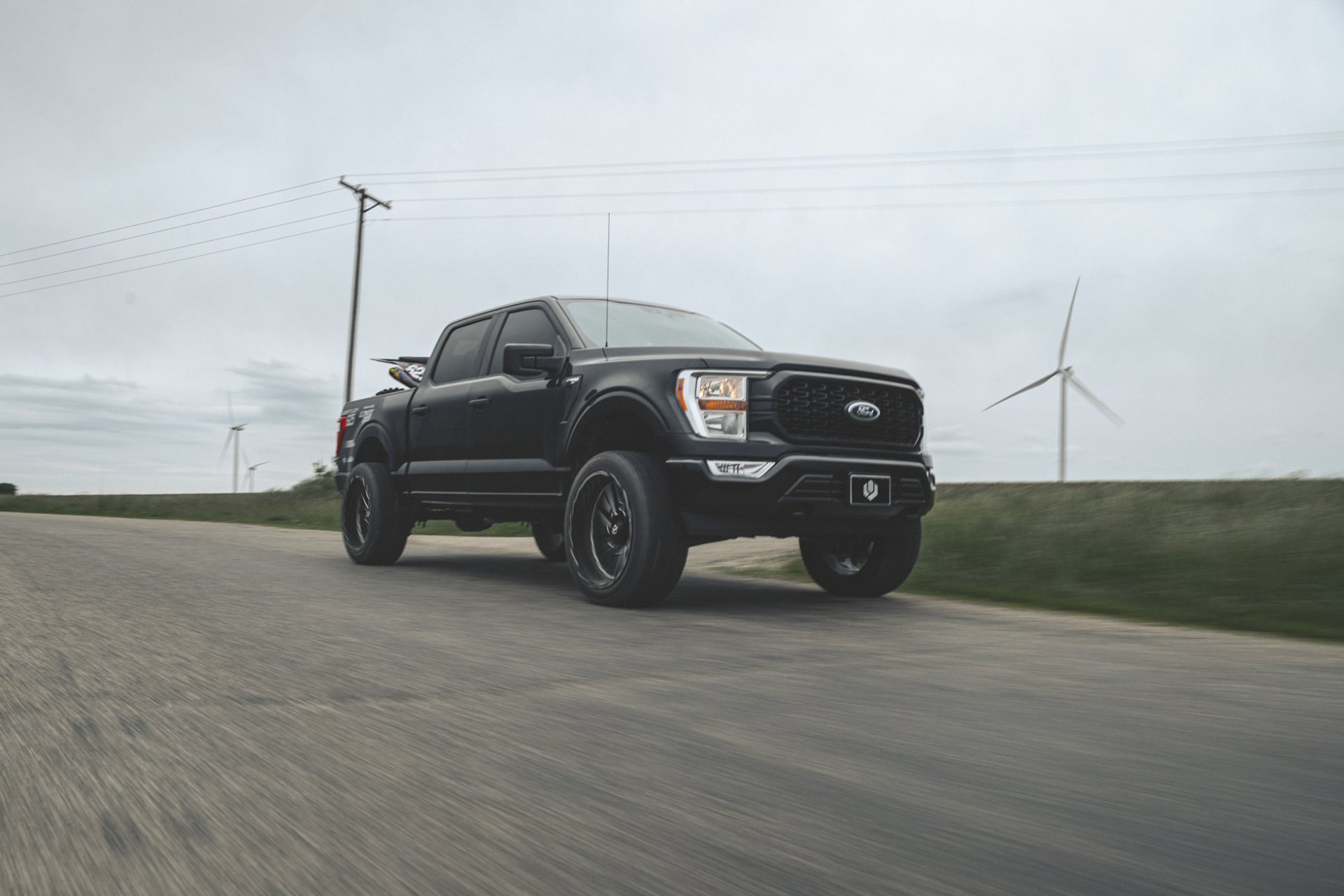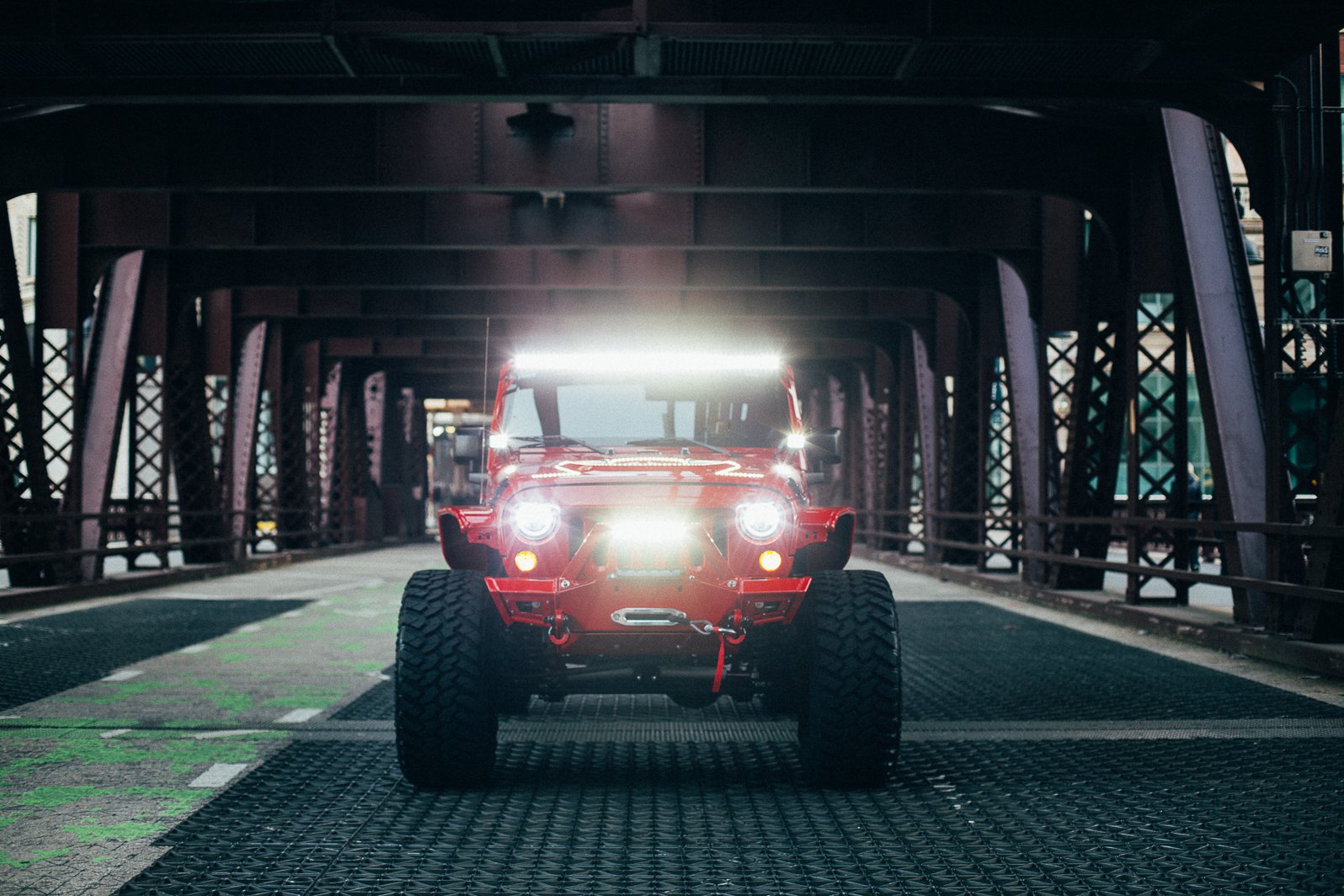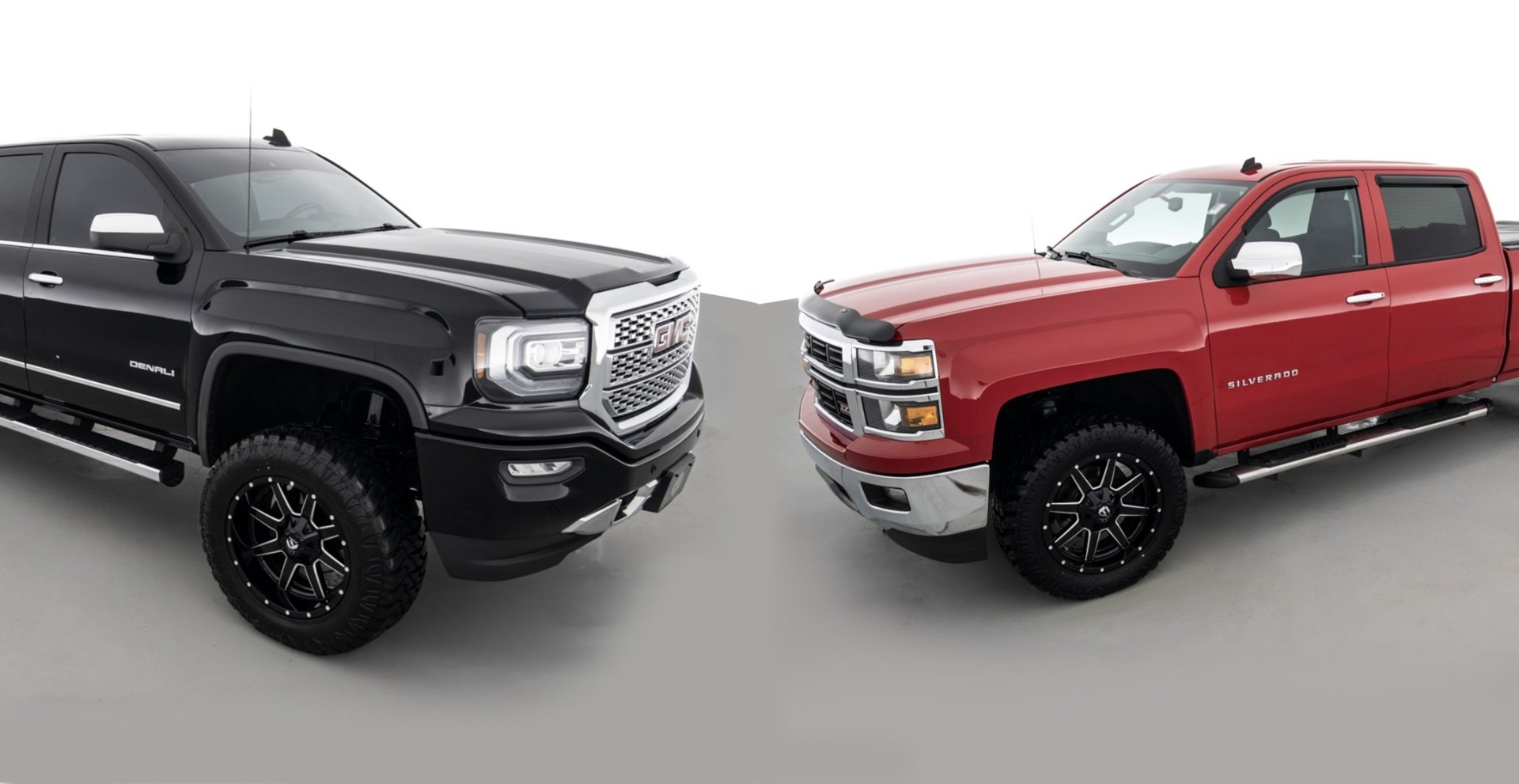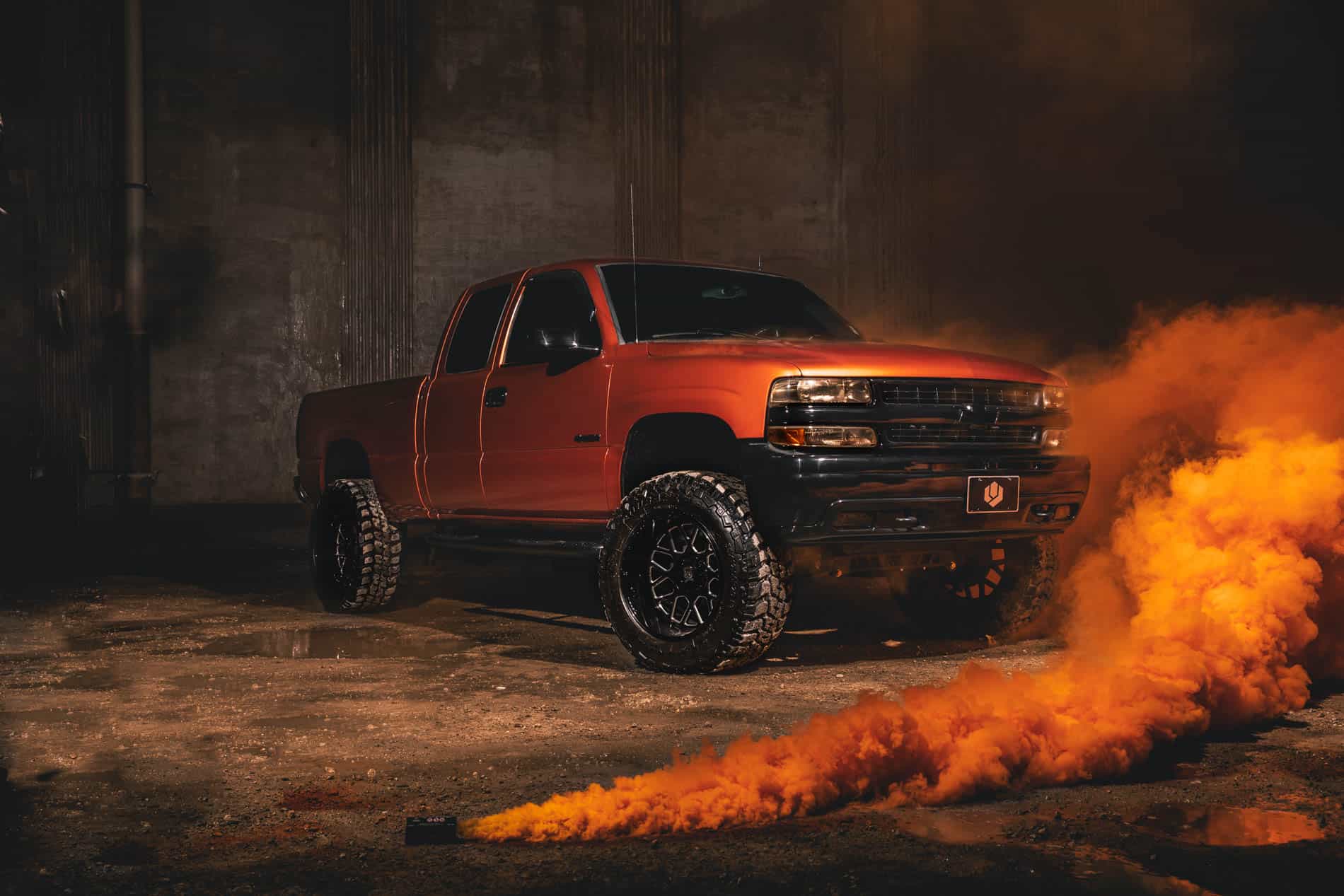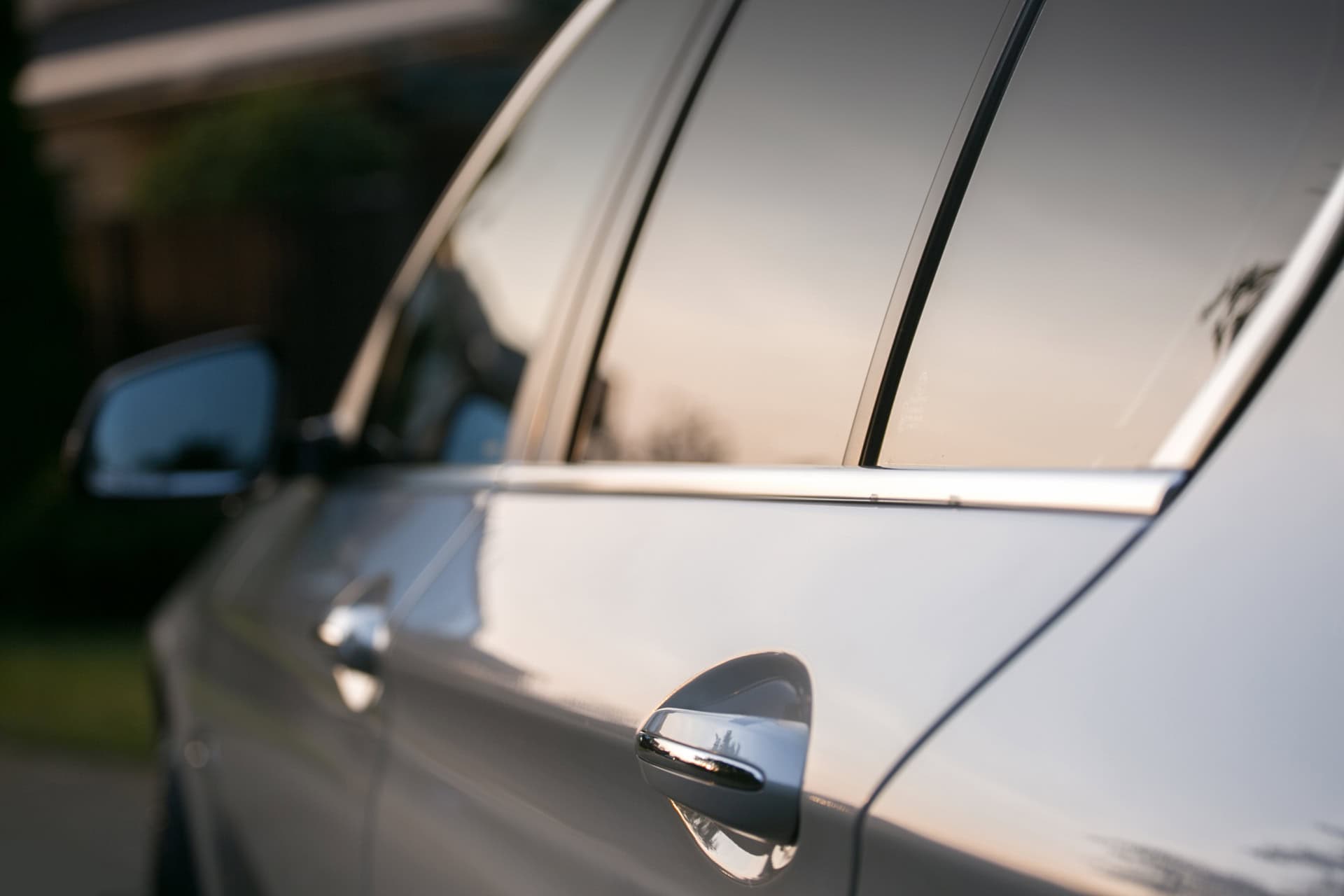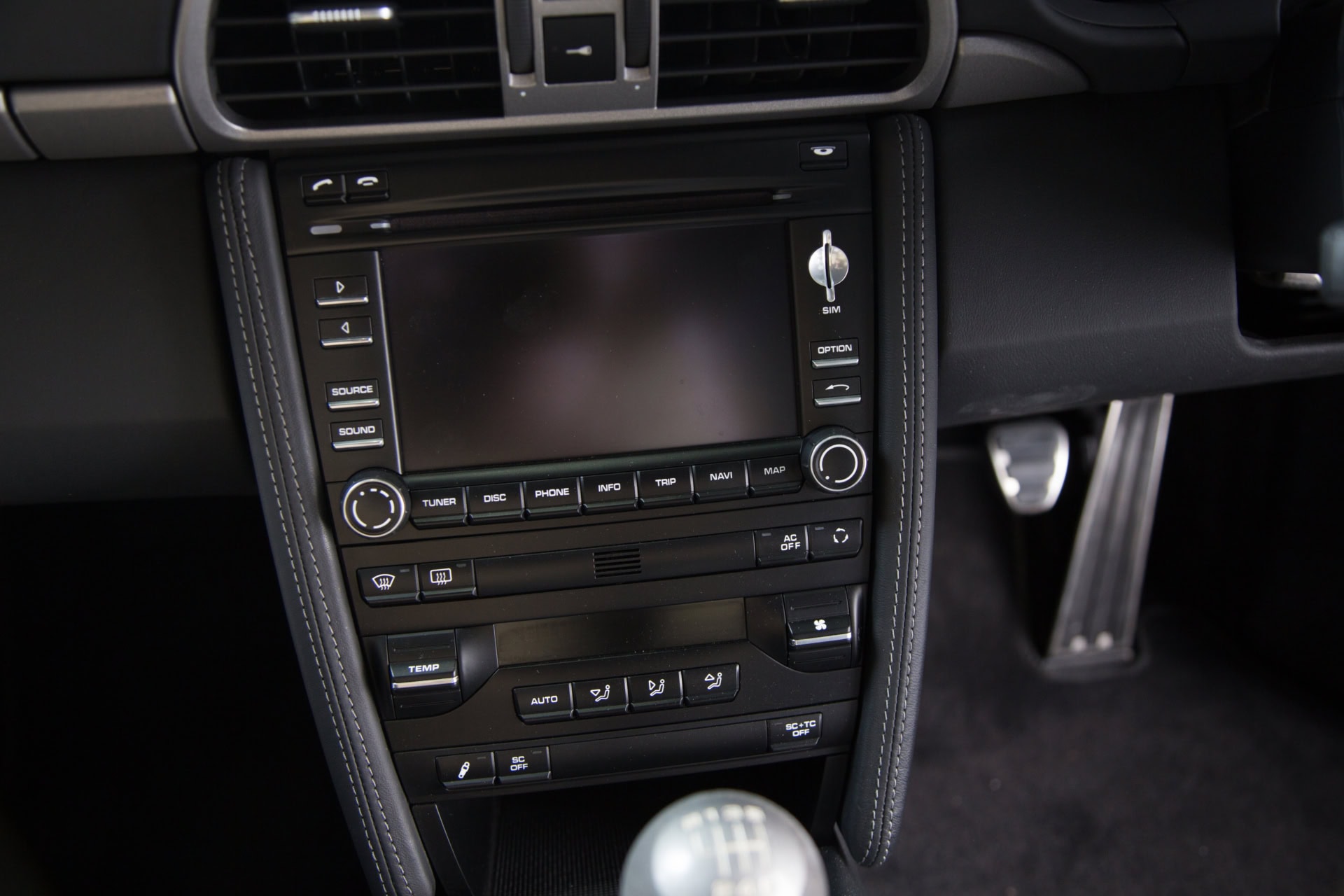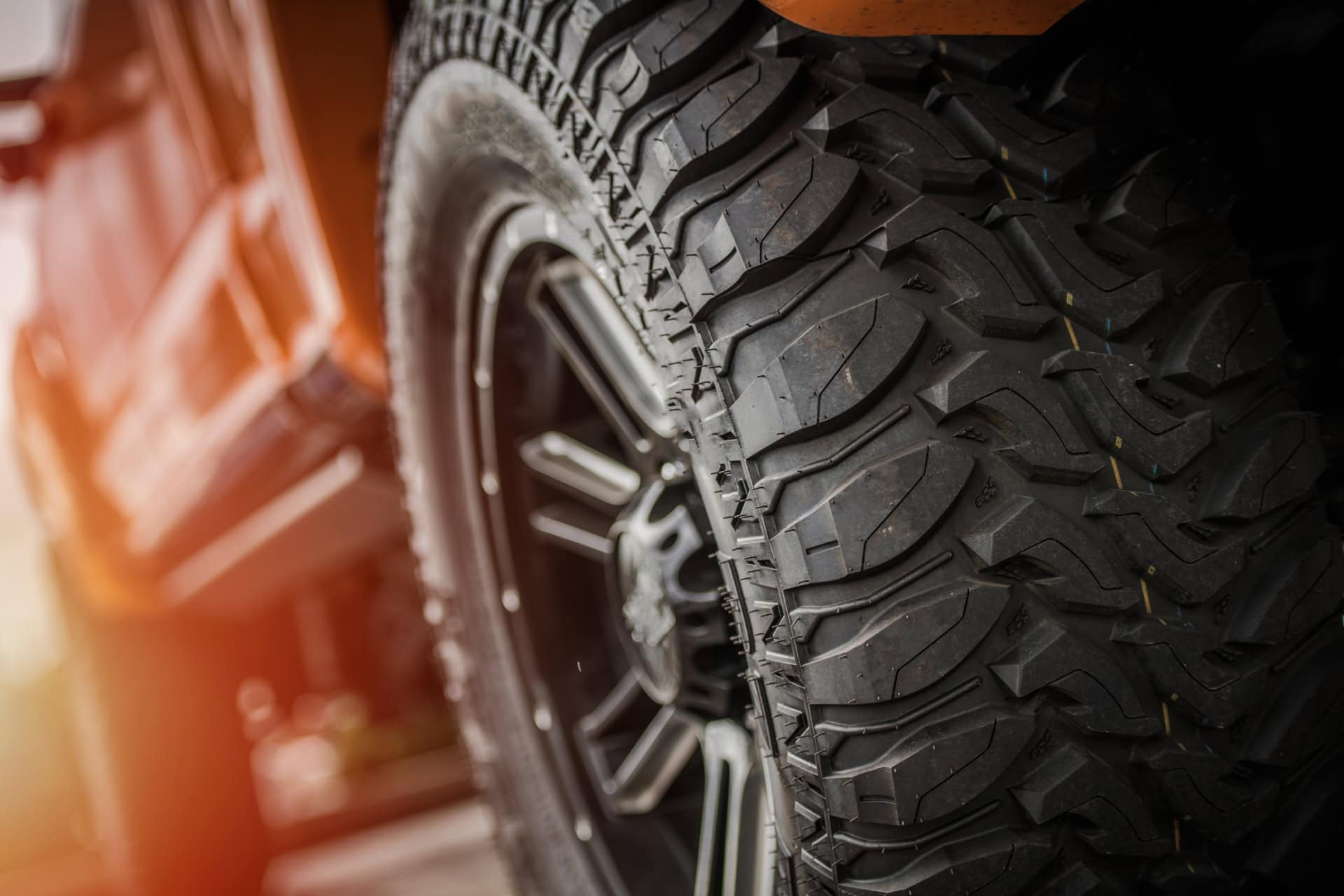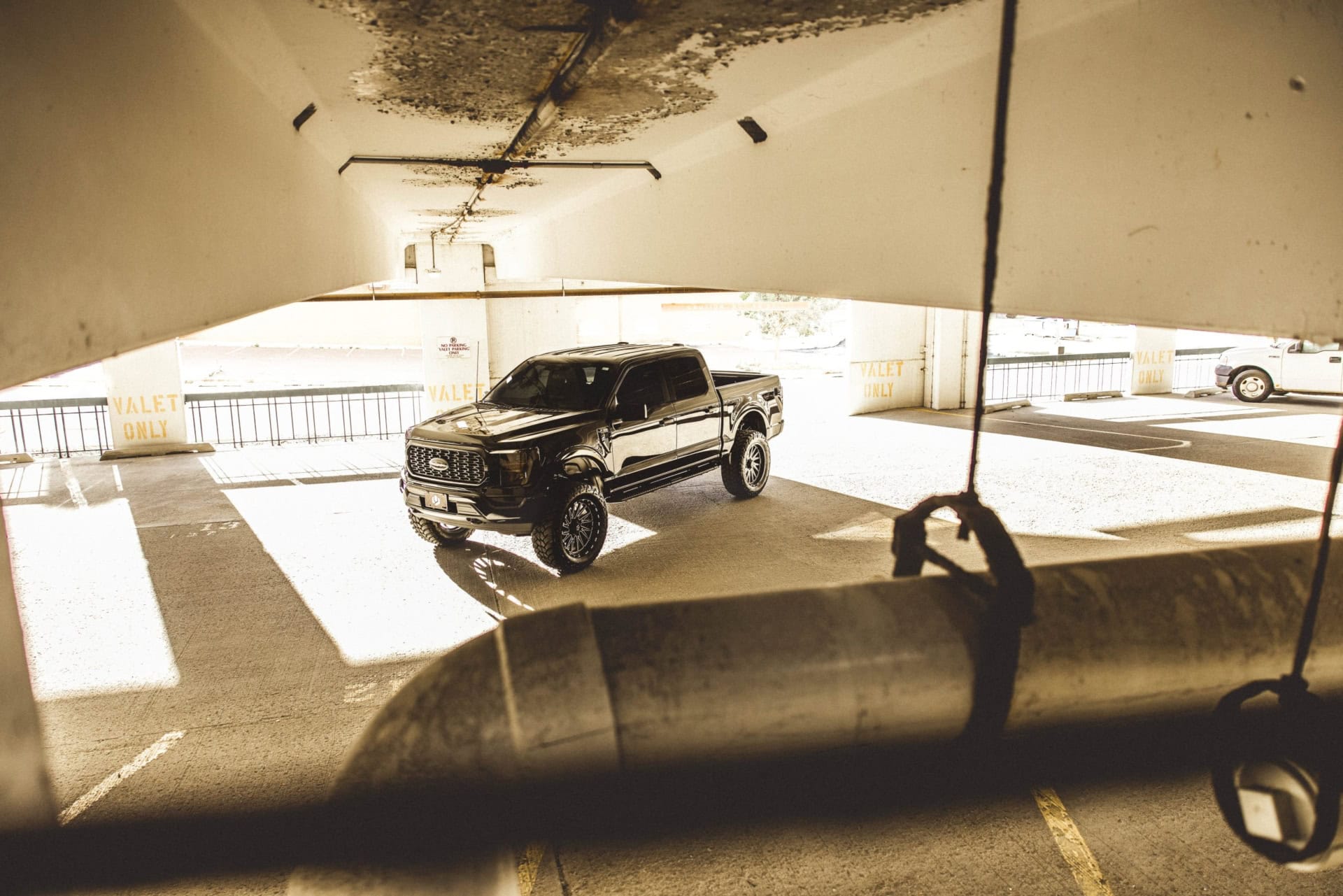Many truck owners experience an unsettling sensation while driving – that unmistakable bouncing feeling that makes every journey a challenge. This bouncing doesn’t just create an unpleasant ride; your safety faces real risks when your vehicle lacks proper stability.
Your truck should glide smoothly across highways and rough terrain alike. Sudden bumpiness warns you about underlying issues needing attention before small problems grow into expensive repairs.
Our team at Ultimate Rides has diagnosed countless bouncing issues on lifted trucks.
When you spend your days building trucks that reach for the sky, you quickly become experts at keeping them from bouncing back down to earth!
We’ll walk you through various causes, situations where bouncing becomes apparent, and practical solutions you can apply. You’ll learn what factors create that jarring feeling on highways, during braking, or when pulling trailers.
Common Causes of Truck Bouncing
Worn or Damaged Shocks and Struts
Shock absorbers and struts control how much your truck moves up and down after hitting bumps. Good shocks convert all that bounce energy into heat instead of letting your truck hop down the road. Bad shocks? You’ll feel every crack in the pavement.
You might have worn shocks if your truck keeps bouncing long after hitting a pothole. Notice how your truck dips forward during hard braking? That’s another red flag. Some folks call this “porpoising” – that up-and-down motion making you feel seasick on land. Without proper shock function, your suspension springs take over, and springs love to bounce!
Lifted trucks face even bigger challenges here. That extra height puts massive stress on stock shocks, which weren’t designed for lifted applications.
We see customers roll in with brand-new lifts but factory shocks, wondering why their ride feels like a pogo stick. Quality aftermarket shocks matched to your lift height make night-and-day differences in ride quality.
Look for dark spots or wetness on your shock bodies. The fluid should stay inside and not leak down the sides.
Suspension System Issues
Your truck’s suspension has more moving parts than a Swiss watch. When these bits wear out, everything gets sloppy. That slop translates directly into bounce.
Hear clunking noises over speed bumps? Notice your steering wheel shimmying at highway speeds? These are all warning signs.
Worn ball joints let wheels wiggle where they shouldn’t, and tired bushings allow excess movement throughout your suspension system.
Lifted trucks really push these components to their limits. That gorgeous 6-inch lift puts crazy angles on parts designed for factory geometry.
We’ve seen control arm bushings absolutely destroyed on lifted trucks where owners skipped necessary upgrades. What starts as a subtle bounce quickly becomes a violent shake once bushings deteriorate.
Check these components regularly – crawl under your truck and grab components to feel for looseness. Any wiggle room should raise red flags.
If your lifted truck is experiencing more of a shake than a bounce, our guide “Why Does My Lifted Truck Shake at High Speeds?” provides targeted solutions for this related but different problem.
Tire Problems
Tires rank high on bounce-causing culprits. Run your fingers across those treads lately? Limp into your driveway on underinflated rubber after hitting that pothole last month? Your tires might be screaming for attention.
Underinflated tires flex too much, creating that squishy, floating sensation at highway speeds. Pump them up too much, and you’ve got another problem – overinflated tires bounce off road imperfections rather than absorbing them. Your truck suddenly feels like it’s riding on basketballs instead of tires.
Ever seen scalloped dips across your tread? Mechanics call this “cupping,” and it creates rhythmic bouncing as those wavy treads hit the pavement. Each rotation thumps through your steering wheel and seat. Cupping usually points to worn suspension parts or balance issues that need addressing.
Those massive off-road tires on your lifted Ford F-150 or Chevy Silverado look awesome, but they need perfect balancing. Their extra weight makes even tiny imbalances feel like major problems.
Bigger tires mean bigger headaches when balancing gets ignored.
This is based on common manufacturer specifications for stock tires and standard load conditions. For the most accurate tire pressure for your truck, always consult the owner’s manual or the tire information placard located on the driver’s side door frame.
Wheel Alignment Issues
Four wheels pointing in slightly different directions—that’s a recipe for bouncing.
Proper alignment means all tires contact pavement at just the right angles, spreading weight evenly across treads. When alignment goes bad, your tires work against each other instead of working together. Your truck wastes energy fighting its own momentum rather than moving smoothly forward.
Notice your truck pulling right when you swear you’re driving straight? Are you fighting the steering wheel just to stay in your lane? Check your alignment. Uneven tire wear – especially those inner or outer edges wearing faster – screams misalignment, too.
That constant pull strains suspension components, creating bounce-inducing play where precision should exist.
Lifted trucks need specialized alignment specs – period. Factory alignment numbers don’t cut it after you’ve changed suspension geometry. We see too many fresh lifts rolling in with awful handling because shops set them to factory specs.
If you own a lifted truck, it needs modified alignment targets. Find a shop familiar with lifted vehicles that will not just plug factory numbers into its alignment machine.
At Ultimate Rides, our lifted truck alignment services are specifically designed for custom vehicles with altered suspension geometry.
That minor fender bender last year? Even slight frame tweaks mess with alignment. The same goes for hammering curbs, blasting through potholes, or catching air off that backroad jump spot. Each impact can nudge alignment out of spec, creating subtle bouncing that worsens over time.
Power Steering Problems
You might not connect steering systems with bouncing problems, but they absolutely can cause mysterious vibrations. Your power steering rack mounts to your frame using rubber bushings that isolate it from road noise and vibration.
When these bushings wear out, your steering rack shifts around more than it should. Every bump telegraphs straight through your steering column to your hands. What feels like front-end bouncing might actually be excessive steering movement. You’ll notice this, especially during turns or when hitting uneven pavement.
A telltale symptom? Your steering wheel shakes or vibrates at specific speeds, and then smooths out as you go faster or slower. Fluid leaks around your steering rack or pump suggest worn seals, which allow components to move excessively.
That clicking noise when turning? Could be worn tie rods or steering joints creating slack in your system.
Lifted trucks put extra strain on steering components, especially those with aftermarket wheels sporting more significant offsets. That increased leverage magnifies any slop in your steering system.
Sometimes, the obvious culprits – shocks and tires – aren’t actually causing your problems.
Specific ‘Bouncing’ Scenarios and Solutions
Bouncing When Pulling a Trailer
Your truck might cruise smoothly as silk until you hook up that trailer. Then, suddenly, it feels like you’re riding a pogo stick. First suspect? Weight distribution. Too much or too little tongue weight throws off your truck’s balance instantly. Aim for 10-15% of the total trailer weight pushing down on your hitch.
Check your setup, too. Weight-distributing hitches work wonders for heavy loads by spreading weight across both axles. For frequent towers, consider airbag helpers or helper springs – they support that extra weight without creating a teeth-rattling ride when empty. And don’t skimp on shocks! Factory shocks weren’t designed for that 9,000-pound toy hauler you’re dragging to the lake every weekend.
Bouncing When Braking
Stomping those brakes shouldn’t turn your truck into a bucking bronco. If it does, warped brake rotors often cause that pulsing, bouncing feeling through your pedal. Heat-damaged rotors can’t maintain even contact with brake pads, creating rhythmic bouncing during stops.
Look at your front-end components too. When you hit the brakes, weight shifts forward dramatically. Worn ball joints, control arms, or tie rods allow excessive movement during this weight transfer. That slop translates to visible bouncing.
ABS engagement also mimics bouncing sensations. If your ABS light stays on or your system kicks in during normal braking, faulty wheel sensors might trigger unnecessary ABS activation, creating pulsing stops when smooth ones should happen.
Bouncing at High Speeds
Highway bouncing frustrates even patient drivers. Tire balance problems typically show up between 55 and 70 mph, that sweet spot where minor imbalances create major vibrations. Fresh balancing often solves this immediately.
Don’t overlook driveline issues. Worn universal joints or driveshaft imbalance worsens as speeds climb. Feel that bouncing intensify during acceleration? This is a classic driveshaft symptom.
For lifted trucks, aerodynamics matter more than you’d think. That modified profile catches wind differently than engineers planned. Your truck might actually be getting slight lift at highway speeds.
Wind deflectors sometimes help by redirecting airflow. Some lifted truck owners report smoother highway manners after adding quality steering stabilizers, which dampen those slight steering movements that wind exaggerates.
Diagnostic Steps for Truck Owners
Visual Inspection
Before calling a mechanic, grab a flashlight and check these areas yourself:
- Tires: Look for uneven wear patterns, bulges, or cupping across treads
- Shocks/Struts: Check for oily residue indicating fluid leaks
- Suspension: Inspect for damaged or disconnected components, excessive rust
- Ball Joints: Look for torn boots or visible grease leakage
- Steering Components: Check for loose connections or damaged tie rods
- Bushings: Examine for cracking, splitting, or deterioration
Bounce Test
Want a quick shock absorber test? Park on level ground and push down hard on each corner of your truck, then release. Good shocks should allow just one bounce back before stabilizing.
If your truck keeps rocking like a boat in rough seas, your shocks likely need replacement. Compare all four corners—any difference between sides points to uneven wear or damage.
This simple test won’t catch every issue, but it quickly identifies severely worn shocks.
Professional Assessment
DIY inspections help, but professional diagnostics catch what human eyes miss. Modern shops use computerized equipment measuring suspension travel and alignment with precision impossible at home.
A qualified mechanic familiar with lifted trucks understands how modifications affect diagnostics. They can spot subtle wear patterns creating those mysterious vibrations.
Skilled mechanics differentiate between modified trucks’ normal characteristics and actual problems—knowledge worth every penny when eliminating complex bouncing issues.
Preventive Maintenance Tips
Stay ahead of bouncing problems with regular maintenance. Keep up with manufacturer-recommended service intervals for suspension checks.
Different driving conditions demand different schedules – off-roading or heavy towing dramatically accelerates wear.
Address unusual noises immediately rather than adapting to them. Many drivers slowly accept progressively worsening conditions until reaching crisis points.
When planning modifications, consider comprehensive upgrades rather than piecemeal changes. Quality lift kits include appropriate components working together as systems rather than individual parts.
Stop the Bounce: Get Back to Smooth Riding
That bouncing sensation means something needs fixing – not living with. From worn shocks to tire issues, identifying root causes beats just masking symptoms. Proper maintenance keeps your truck riding smooth and safe, especially with aftermarket modifications.
Ready to End Your Lifted Truck’s Bouncing Problems?
Visit Ultimate Rides’ lift shop for professional diagnostics and proper fixes from suspension experts. We’ll eliminate bouncing issues with quality components perfectly matched to your custom setup.
Why not browse our inventory of ready-to-roll lifted trucks, each tuned for smooth performance and head-turning looks.
Frequently Asked Questions
How often should shock absorbers be replaced on trucks?
We recommend checking shocks at around 50,000 miles and expect to replace them by 80,000. If you haul loads or hit trails regularly, cut those numbers in half. Leaking shocks need immediate attention. That black gunk on your shock body means it’s toast.
Can adding weight to my truck bed help with bouncing issues?
Throwing sandbags in your bed might Band-Aid certain bounce issues. But it’s like taking aspirin for a broken arm. Yeah, it helps the pain, but doesn’t fix what’s broken. Extra weight actually beats up your already hurting suspension faster. Skip the quick fix. Find what’s actually worn out and replace it.
Will larger tires make my truck bounce more?
Big tires look sick, but if you cut corners, they’ll make existing bounce problems way worse. Big rubber weighs more, so tiny balance issues feel like major problems. You need good shocks and proper balancing with those monsters. Do it right, or stick with stock sizes.
How do I know if my truck’s bouncing problem is dangerous?
Bouncing becomes dangerous when it starts impacting your ability to keep control of your vehicle. Warning signs include difficulty maintaining lane position, unpredictable handling during emergency maneuvers, or excessive movement during routine braking.
Any bouncing that’s severe enough to affect steering precision or braking performance requires immediate attention.
